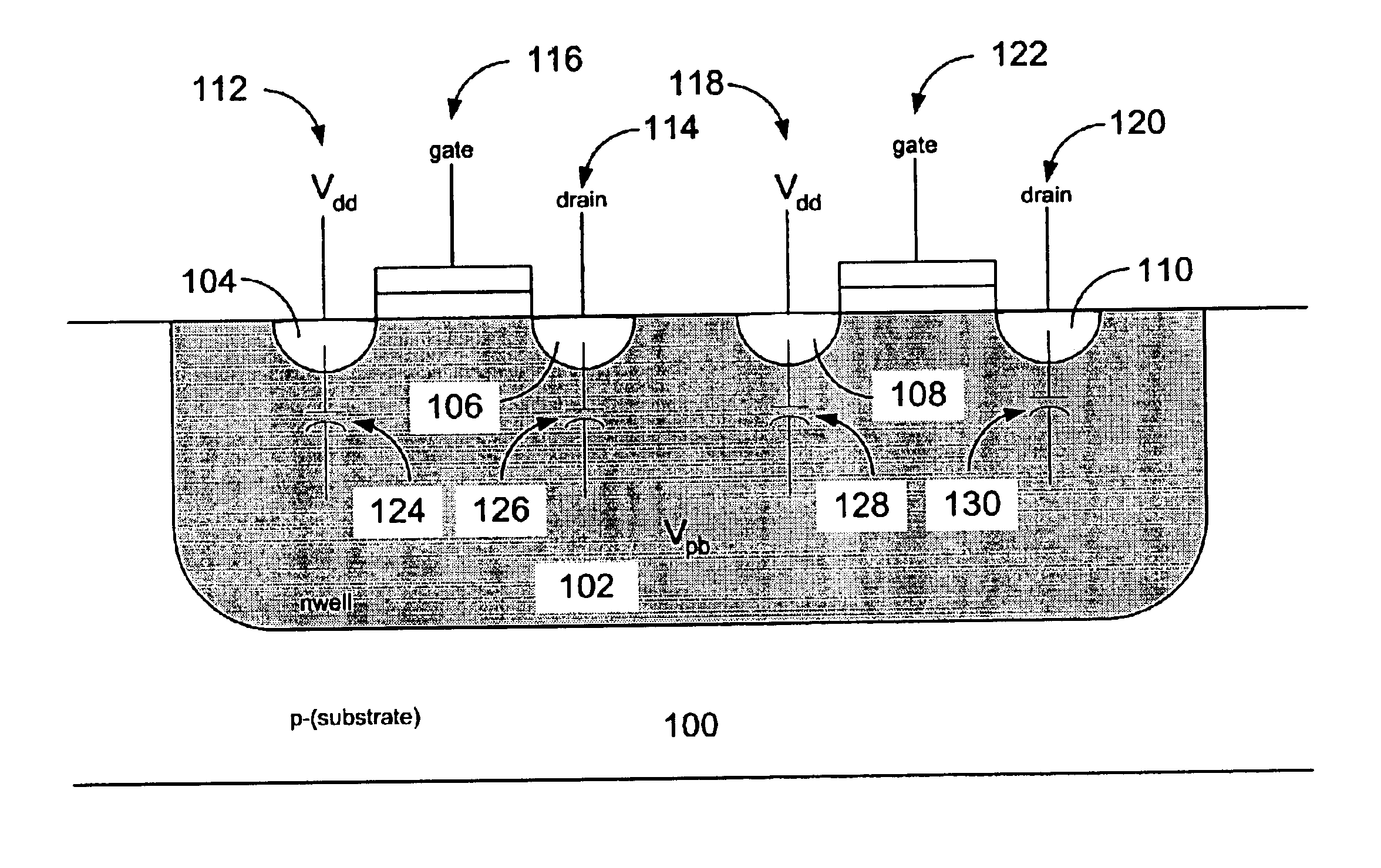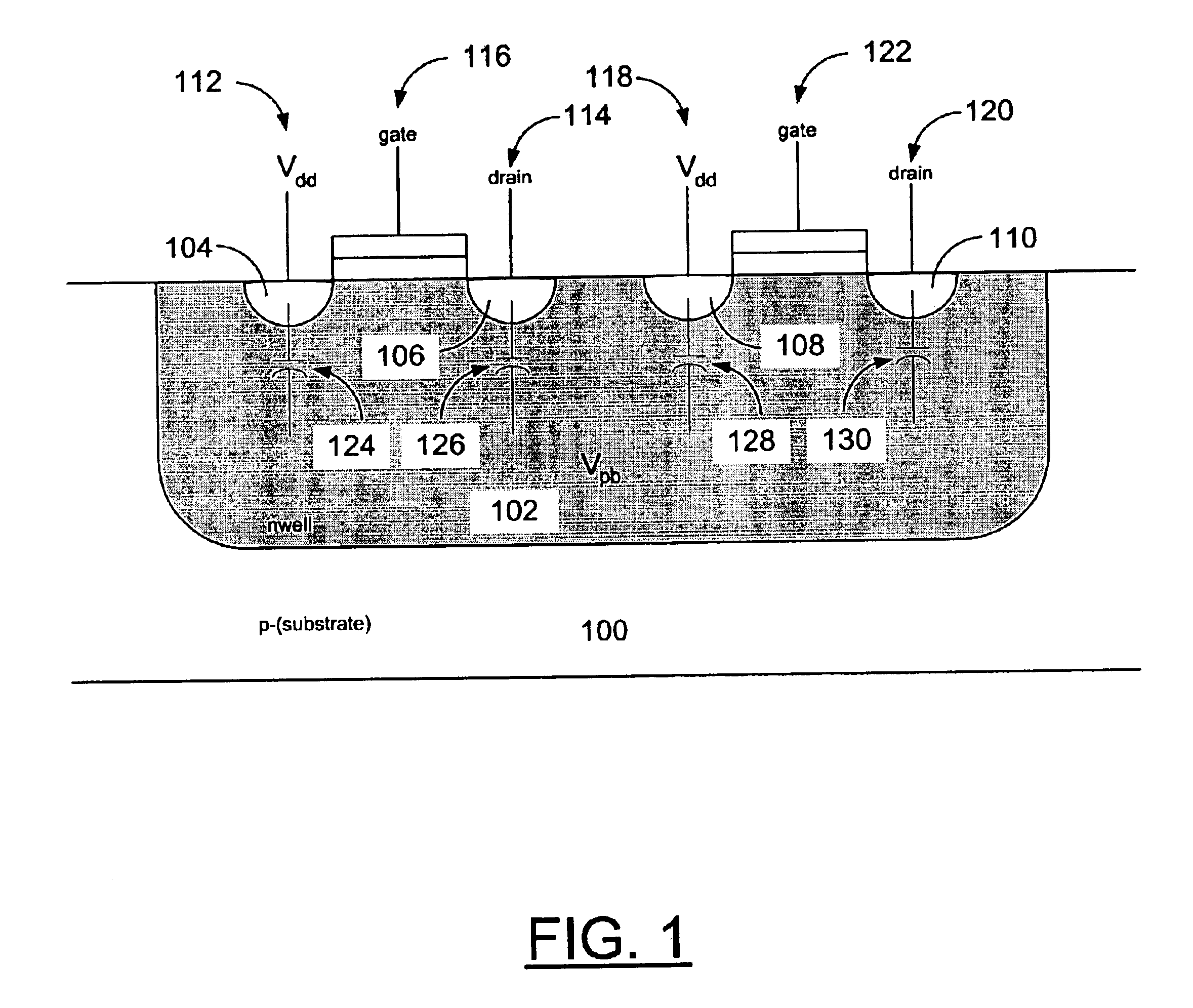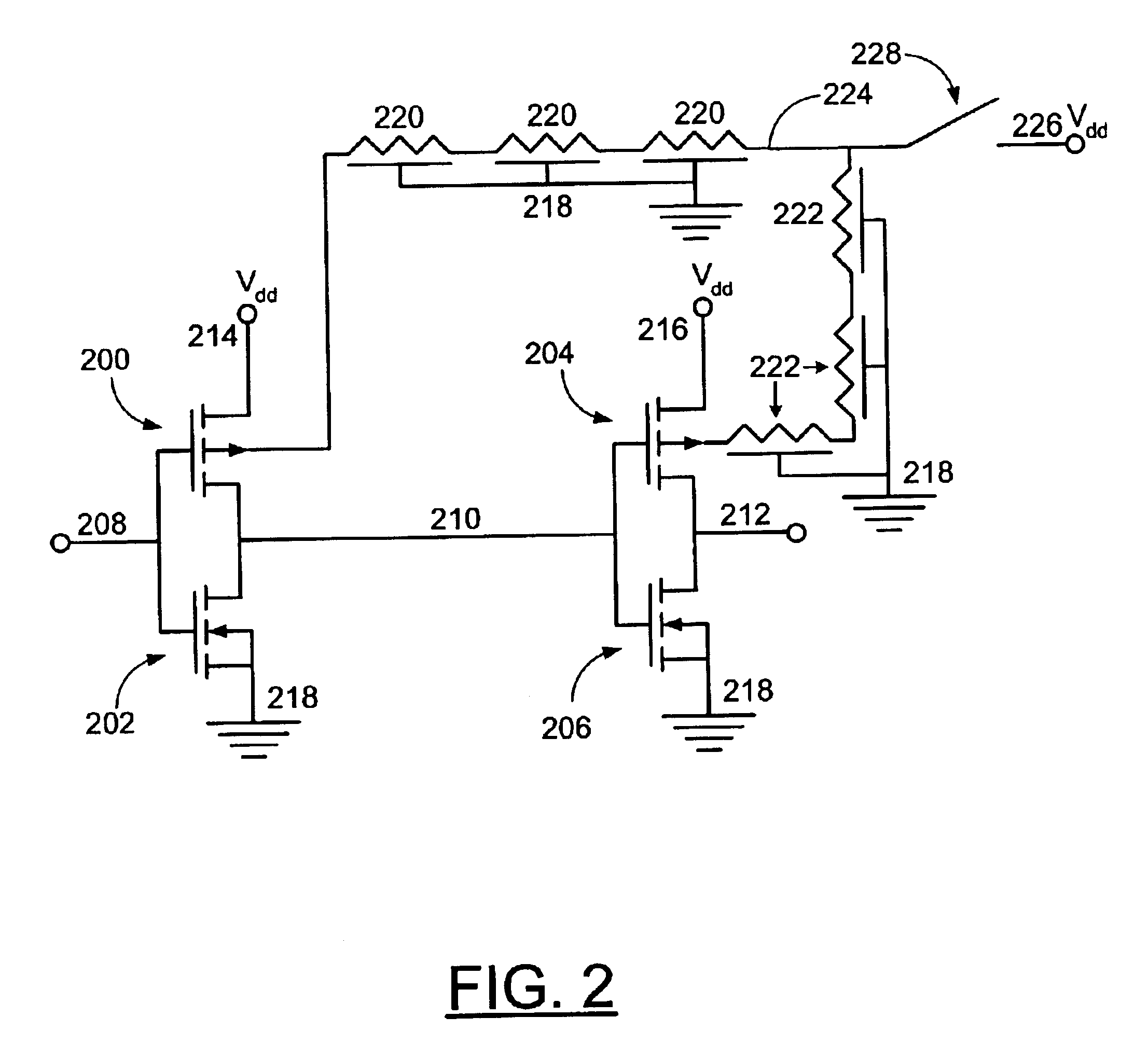Individually adjustable back-bias technique
a back bias and individual adjustment technology, applied in pulse technique, radiation control device, transistor, etc., can solve the problems of significant impact on performance and power consumption, significant influence of die-to-die and within-die variations, and silicon manufacturers have not been able to keep up with technology scaling, so as to achieve close control of chip power and performance, the effect of reducing the effect of d2d and wd process variations
- Summary
- Abstract
- Description
- Claims
- Application Information
AI Technical Summary
Benefits of technology
Problems solved by technology
Method used
Image
Examples
Embodiment Construction
In an n-well or triple-well CMOS process, n-wells (pfet bodies) are normally connected directly to the power supply voltage, Vdd. Reducing the pfet body bias reduces their threshold voltage, Vt, making the pfets switch faster and increasing their leakage current. Since pfets are inherently slower than nfets, their switching speed is usually one of the limiting factors in overall circuit performance. Increasing pfet speed can provide a significant speed up of the entire circuit. However, instead of using a separate power supply and power grid to control Vpb (the body voltage of the pfets) as previous researchers have done, one can use the capacitive coupling between drain and body of the pfets to provide Vpb for an entire n-well as illustrated in FIG. 1.
FIG. 1 is a cross-sectional view of an n-well including two pfets. In the example embodiment of the present invention shown in FIG. 1, an n-well 102 is created within a p-substrate 100. Two pfets are shown. A first pfet includes a fir...
PUM
 Login to View More
Login to View More Abstract
Description
Claims
Application Information
 Login to View More
Login to View More - R&D
- Intellectual Property
- Life Sciences
- Materials
- Tech Scout
- Unparalleled Data Quality
- Higher Quality Content
- 60% Fewer Hallucinations
Browse by: Latest US Patents, China's latest patents, Technical Efficacy Thesaurus, Application Domain, Technology Topic, Popular Technical Reports.
© 2025 PatSnap. All rights reserved.Legal|Privacy policy|Modern Slavery Act Transparency Statement|Sitemap|About US| Contact US: help@patsnap.com



